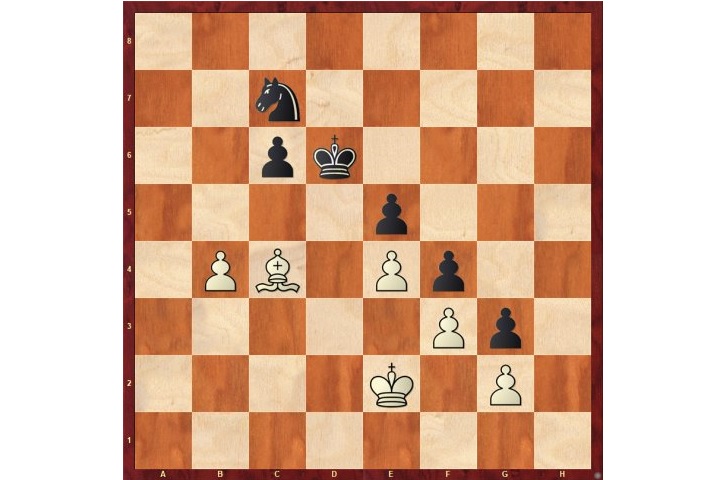Riddle solved: Torre's 66th move was a mistake
This riddle was complicated and in some lines Black wins just before the 50-move rule would have led to a draw. It is amazing to see what the knight must do to outfox the bishop.
It was Charles Sullivan (USA) who proposed to have a closer look at this riddle, and as usual Zoran Petronijevic suggested a lot of lines and also formulated the conclusions, which Charles Sullivan then edited slightly:
The endgame in E. Torre-O. Jakobsen, 1973: Conclusions
1. The initial position after Black's 65th move should lead to a draw with best play from both sides though Black has more space for maneuvering.
2. White's 66th move is a premature attempt to trade pieces which could have led to a losing position.
3. ChessBase reader "malfa" suggested 67...c5 as a possible win for Black, and he is right!
4. After 74.Bf1? White is lost. Better was 74.Be2 which saves a draw. Of course, in a practical game it isn’t possible to find the difference between these two moves. Even in analysis it is hard to see a difference.
5. After 78…Kxc5 Black has a won position but a huge problem: the 50-moves rule. If Black does not move a pawn or capture a piece in the next 50 moves, the game will be declared drawn.
6. 80…Ka5 is a mistake which allows White to make a draw due to 50-moves rule. After 80…Kc6, however, Black is winning in time.
7. The game move 82.Kd2 holds the draw and 82.Kc4 also leads to a draw.
8. 83.Be2 is the *decisive* mistake which loses. After 83.Kd3! White can draw due to the 50-moves rule! It is interesting that Timman mentions 83.Kd3 loses (in: Jan Timman, Power Chess With Pieces, New In Chess 2004.
9. 84.Bd1 is imprecise because it makes Black's task easier. After the better 84.Kd3 Black must play precisely to avoid a draw because of the 50-moves rule.
10. 88…Kd3 is imprecise. Better is 88…Kc4.
11. 90….Kd2 is not the best. Better is 90…Nb5.
12. 93…Nb1 is not the best. Better is 93…Kc2.
13. 103.Bb5 helps Black. After 103.Bc4 Black would need to play flawlessly to win within 50 moves.
In his book Power Chess With Pieces, mentioned above, Jan Timman told the following anecdote: "The impossibly tall Danish master was so proud of his endgame technique that he showed the final stages of the game to Spassky, who was playing in the Main Group and happened to be talking to me at the time. I remember that Spassky was hardly impressed. 'These manoeuvres are characteristic for this type of endgame,' he said matter-of-factly, leaving a rather disconcerted Jakobsen, who had spent countless hours analysing this endgame, in his wake." (p. 92).
It would be interesting to know Spassky’s opinion of this modern computer-assisted analysis, in which Black sometimes requires a really crazy knight maneuver to win and to avoid the 50-moves rule.
Links























